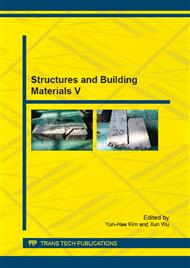p.190
p.194
p.201
p.215
p.220
p.224
p.229
p.233
p.237
Features of Phase Formation in Cellular Autoclaved Composites with Nanostructured Modifier
Abstract:
The influence of a nanostructured modifier of silicate composition on the phase formation in the system of cellular composites of autoclaved hardening is studied. It is established that the reaction-active component NM favors the displacement of C-S-H phase formation to the low-basic field. In the process, an optimal ratio of low-and highly basic calcium hydro-silicates is formed that favors the improvement of strength characteristics of autoclaved gas concrete with the use of the nanostructured modifier and its operating life in the process of exploitation.
Info:
Periodical:
Pages:
237-240
Citation:
Online since:
July 2015
Keywords:
Price:
Сopyright:
© 2015 Trans Tech Publications Ltd. All Rights Reserved
Share:
Citation:


